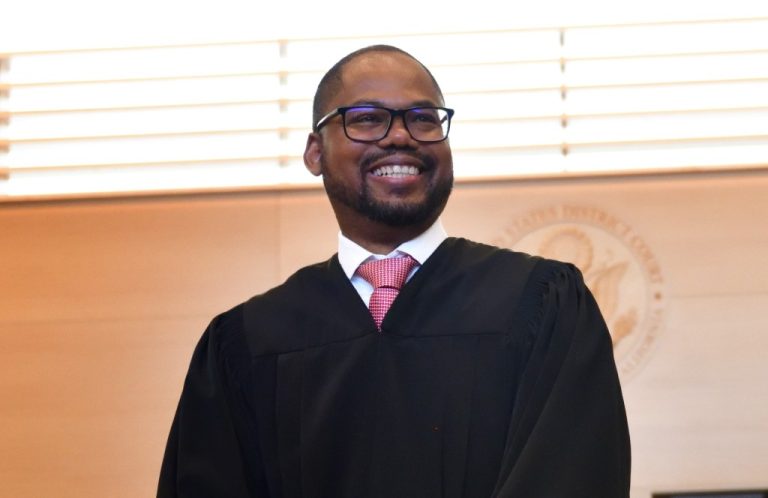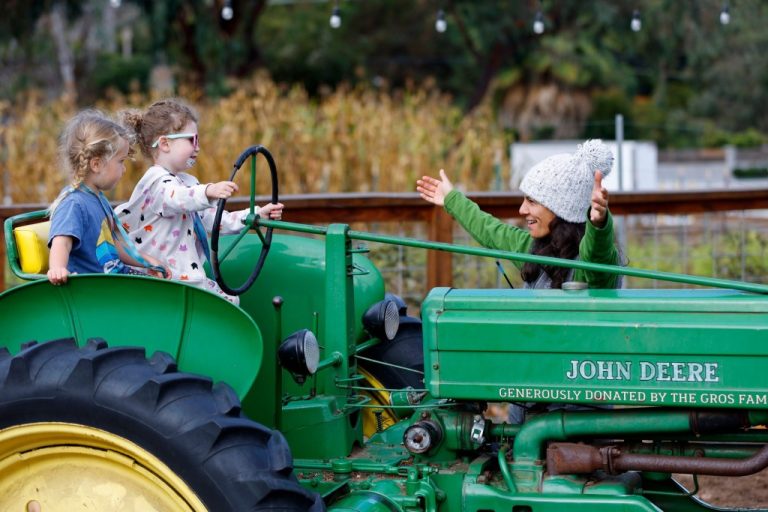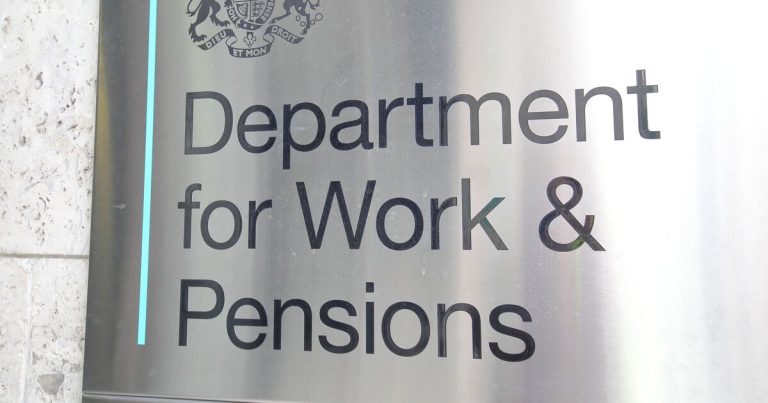Two men embraced as dozens of migrants got off a bus.
“Hi friend,” one excitedly said to the other in English before they walked off, conversing in another language.
Like many others seeking asylum, the pair had been separated by Border Patrol during processing before being reunited at a new temporary migrant welcome center in central San Diego.
Reunifications are common at the center, which has moved in the last two weeks from the parking lot of the Iris Transit Station in Otay Mesa to a new, undisclosed location in the city center.
More than 30,000 migrants have been processed by Border Patrol since mid-September before being dropped off at transit stations in San Diego County, according to county officials. Local aid groups are providing the migrants with basic services, Wi-Fi and transportation to help get them on their feet before they continue onto their final destination.
The move to the new site comes after the San Diego County Board of Supervisors put SBCS — formerly South Bay Community Services — in charge of $3 million for migrant services last month so local aid groups can continue to provide resources to migrants who are seeking asylum after crossing the U.S.-Mexico border.
Border Patrol was previously dropping off the majority of the migrants at the Iris transit station, where they would receive services at an impromptu welcome center in the station’s parking lot. Since moving the center to the new location, the county says that Border Patrol has declined to bring migrants directly to the new center.
Instead, SBCS is picking up around 400 to 700 migrants in rented buses each day from the Brown Field Border Patrol Station and taking them to the welcome center, where they are greeted by volunteers and translators, primarily speaking Spanish, French, Chinese and Arabic. Approximately 40 to 80 migrants are also picked up from the San Clemente Border Patrol Station daily.
Michael Workman, the county spokesperson, said the majority of the funding is currently being spent on the buses to transport migrants from the processing stations to the migrant welcome center.
SBCS says it’s in contact with Border Patrol several times a day for updates on the time and location of migrant releases.
Border Patrol did not respond to the Union-Tribune’s questions about the migrant releases.
The new center location is much more conducive to the services being offered by SBCS and other partnering nonprofits, said Mindy Wright, the SBCS communications director.
Previously, at the Iris station, nonprofits would have to set up and then break down booths each night, Wright explained. The new center is in a location where they can securely store supplies overnight. “This is a much better situation,” she said.
The exact location of the new center is not being disclosed for security reasons.
Workman said that the county evaluated about a half dozen locations as potential sites for the migrant center. It reviewed properties based on factors including safety and access to running water and electricity before SBCS made the ultimate decision on the new location.
The Iris station was “an open lot — not an ideal situation,” Workman said.
The $3 million funding allocation for the center and support services is meant to last local aid groups three months, or roughly through the end of the year, though Workman said the funding may only last until the middle of December. The county continues to ask the federal government for additional assistance, Workman said.
“We did this as a stopgap (before securing federal funding), but there are people on many fronts — legislative, in the board office — who are looking to what’s next and what we’re going to do,” he said.
SBCS officials say they are starting to plan how they will continue to provide services after the funding runs out.
In addition to transportation, the funding is also going toward needs including staffing, temporary shelter and supplies, Wright said.
At the center on Monday, migrants could be seen plugging their phones into one of the many charging stations scattered along a cluster of cafeteria tables that sit under a shade awning.
Signs written in various languages on brightly colored poster boards are dotted through the site, telling arrivals that they are in San Diego, sharing the Wi-Fi password and address, and directing them to different services — from where to find bathrooms to booths manned with volunteers who can provide legal assistance and help with travel coordination.
Other signs sport hand-drawn graphics of buses, planes and trains to help migrants know where they’re headed, regardless of what language they speak.
Each time a bus of migrants arrives at the center, volunteers on megaphones help to welcome them and ensure they understand that they have been released from custody and are free to leave if they choose.
“Some people understand immediately, and some people get here and they don’t even know if they’re still in custody or not,” Wright said.
In 2021, SBCS ran a center for some 3,200 unaccompanied migrant children at the Convention Center in downtown San Diego.
This time is different, though, Wright said. Rather than children, most of the asylum seekers they are currently serving are adults. And instead of providing overnight shelter services, a majority of migrants are continuing on to other parts of the U.S. and need only temporary assistance to continue their journeys.
Volunteers’ first priority is orienting migrants, welcoming them, asking them how they’re doing, what they need and letting them know where they are, Wright explained.
If translators aren’t immediately available, they communicate with gestures and thumbs ups. SBCS is working to bring on more translators in other languages.
After the long journey, many migrants show up to the center with tattered clothing, shoes and bags — some even using potato sacks to carry their belongings. They are immediately given access to donated items, including toiletries to brush their teeth.
There are more than a dozen organizations providing services at the center, Wright said, including Haitian Bridge Alliance, Al Otro Lado, Logan Heights CDC, International Rescue Committee and the county of San Diego. On average, about 10 to 20 volunteer staff are on site each day.
Workman said that roughly four to five county employees are on site to provide assistance daily, including welcoming migrants when they arrive at the center, helping them check in and coordinate onward travel.
The center, which is typically open from about 8 a.m. to 7 p.m., also provides migrants with coffee and water throughout the day, along with breakfast, lunch and dinner prepared on site by I Love to Glean, a South County-based organization that recovers and distributes food that would otherwise be thrown away, with help from Feeding San Diego and other nonprofits.
SBCS is using a portion of the $3 million to reimburse I Love to Glean for food purchases. I Love to Glean is also using food that would have gone to waste and taking food donations from the community.
“We’re out of camping mode,” said Karen Clay, the president of I Love to Glean, explaining that the new migrant center location has a small kitchen and electricity so they can safely store perishable items. “We can create things because we have the amenities.”
The organization is mainly preparing vegetarian meals for the migrants in an effort to provide culturally appropriate food for the various nationalities represented at the center. Clay said the meals are healthy and high in protein, as many migrants may have not eaten for a long period of time before arriving at the center.
Several organizations, including Casa Familiar, Haitian Bridge Alliance and Al Otro Lado, are accepting donated supplies such as clothing, hygiene items, shoes and backpacks.






